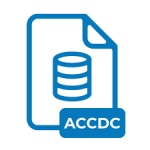.DACPAC File Extension

SQL Server Data Tier Application Package
| Developer | Microsoft |
| Popularity | |
| Category | Database Files |
| Format | .DACPAC |
| Cross Platform | Update Soon |
What is an DACPAC file?
.DACPAC file extension holds significant importance, particularly within the SQL Server ecosystem. It represents the SQL Server Data Tier Application Package, abbreviated as DACPAC, a container for the logical database schema and metadata that define an SQL Server database.
This article aims to provide a comprehensive understanding of DACPAC files, exploring their origin, structure, conversion methods, and compatibility across different operating systems.
More Information.
Before the advent of DACPAC files, database deployment and management were often complex and error-prone processes, involving manual scripting and configuration.
The DAC framework sought to streamline these tasks by introducing a standardized packaging format that encapsulated the database schema, including tables, views, stored procedures, and other objects, into a single unit.
With DACPAC files, developers and database administrators gained the ability to version-control database schemas, compare different schema versions, and deploy databases with greater ease and consistency.
This marked a significant advancement in the field of database lifecycle management, enabling more efficient development workflows and smoother deployment processes.
Origin Of This File.
The DACPAC file format emerged alongside the Microsoft SQL Server Data-Tier Application (DAC) framework, introduced with SQL Server 2008 R2.
This framework aimed to simplify the deployment and management of database applications by encapsulating the database schema and related artifacts into a single package.
The DACPAC file, therefore, serves as a portable representation of a SQL Server database, facilitating its deployment across various environments.
File Structure Technical Specification.
DACPAC file is essentially a zip archive containing XML-based metadata files that describe the database schema and related objects. At its core, the DACPAC file consists of two main components:
- Model.xml: This file represents the database model and contains the definition of database objects such as tables, views, indexes, constraints, and stored procedures. It serves as the primary source of information for database deployment and schema comparison tools.
- Scripts folder: This directory includes Transact-SQL (T-SQL) scripts for database deployment and updates. These scripts are organized based on the type of operation they perform, such as creating or altering database objects.
The structure of a DACPAC file adheres to the DAC standards defined by Microsoft, ensuring compatibility across different SQL Server versions and deployment tools.
Additionally, DACPAC files support incremental deployments, allowing for efficient updates to existing databases without requiring a full schema re-deployment.
How to Convert the File?
Converting DACPAC files to other formats or vice versa typically involves using specialized tools designed for database deployment and management. Microsoft provides several tools and utilities for working with DACPAC files, including:
- SQL Server Data Tools (SSDT): SSDT is an integrated development environment (IDE) for building, debugging, and deploying SQL Server databases. It includes features for creating DACPAC files from existing databases and deploying DACPACs to target environments.
- SqlPackage.exe: SqlPackage is a command-line utility provided by Microsoft for deploying DACPAC files and performing schema comparisons. It allows users to automate database deployment tasks and integrate them into continuous integration and continuous deployment (CI/CD) pipelines.
- Visual Studio: Visual Studio, Microsoft’s flagship IDE, also includes support for working with DACPAC files through the SQL Server Database Project template. Developers can use Visual Studio to manage database schemas, generate DACPAC files, and deploy databases to target environments.
Advantages And Disadvantages.
Advantages:
- Portability: DACPAC files provide a portable representation of database schemas, allowing for easy deployment across different environments.
- Version Control: By encapsulating the database schema in a single package, DACPAC files facilitate version control, enabling developers to track changes to the database structure over time.
- Consistent Deployments: DACPAC files ensure consistent database deployments, reducing the risk of configuration errors and inconsistencies between development, testing, and production environments.
- Schema Comparison: Database administrators can use DACPAC files to compare different schema versions and identify discrepancies, streamlining the process of database updates and migrations.
Disadvantages:
- Limited to SQL Server: DACPAC files are specific to Microsoft SQL Server and may not be compatible with other database platforms.
- Lack of Data: While DACPAC files contain the database schema and metadata, they do not include the actual data stored in the database tables.
- Complexity: Managing DACPAC files and deploying databases using DACPACs may require familiarity with SQL Server tools and deployment processes.
How to Open DACPAC?
Open In Windows
- SQL Server Management Studio (SSMS): SSMS is a Windows-based application provided by Microsoft for managing SQL Server databases. To open a DACPAC file in SSMS, launch the application, connect to the desired SQL Server instance, and use the “Deploy Database…” option to select the DACPAC file for deployment.
- Visual Studio: Visual Studio includes support for SQL Server Database Projects, allowing you to open DACPAC files within the IDE. Simply create a new SQL Server Database Project or open an existing one, then import the DACPAC file into the project.
Open In Linux
- Azure Data Studio: Azure Data Studio is a cross-platform database management tool that works on Linux. You can open DACPAC files in Azure Data Studio by launching the application, connecting to your SQL Server instance, and using the “Deploy Database…” option to select the DACPAC file for deployment.
- SqlPackage.exe: SqlPackage is a command-line utility provided by Microsoft for deploying DACPAC files. You can run SqlPackage on Linux using Mono or .NET Core. Simply execute the SqlPackage command with the appropriate parameters to deploy the DACPAC file to your SQL Server instance.
Open In MAC
- Azure Data Studio: Azure Data Studio is also available for macOS. You can open DACPAC files in Azure Data Studio by following the same steps as mentioned for Linux.
- Command-Line Tools: Similar to Linux, you can use SqlPackage.exe on macOS to deploy DACPAC files to SQL Server instances.













